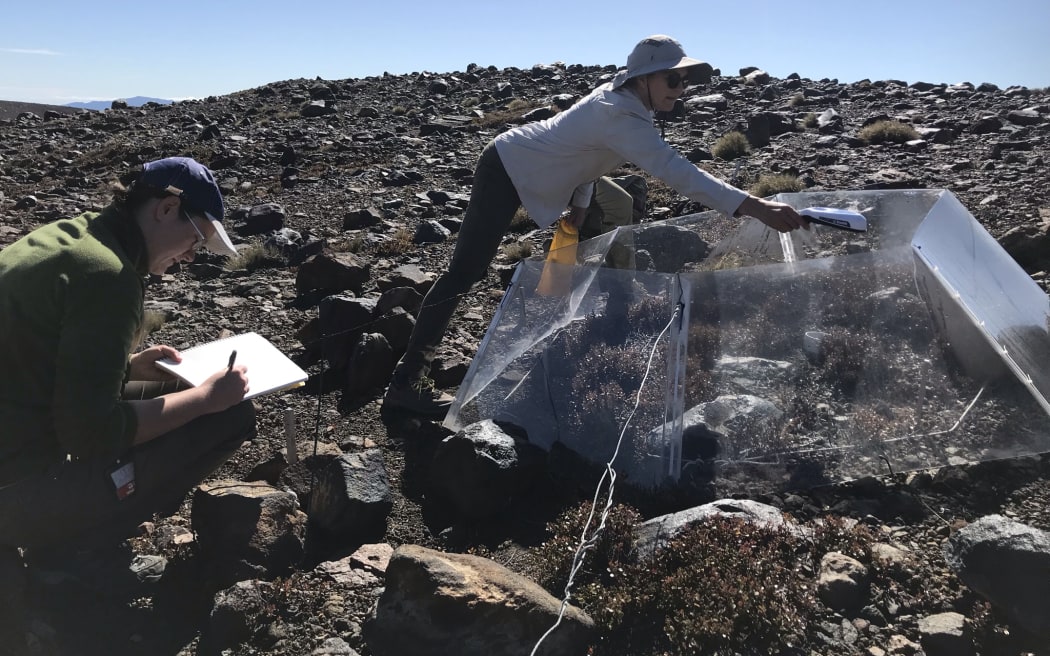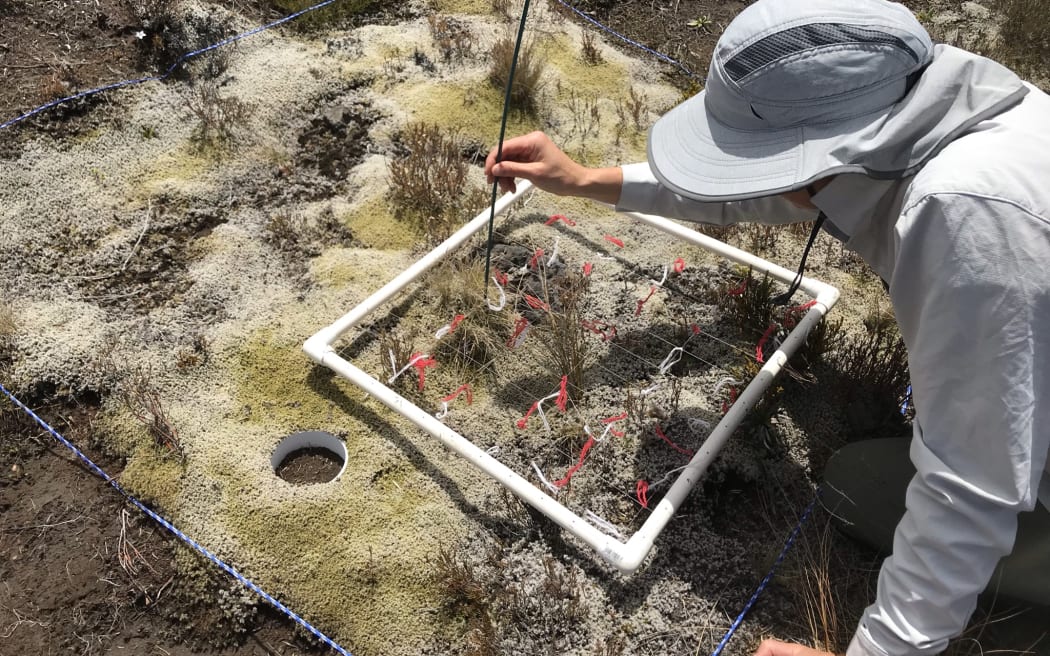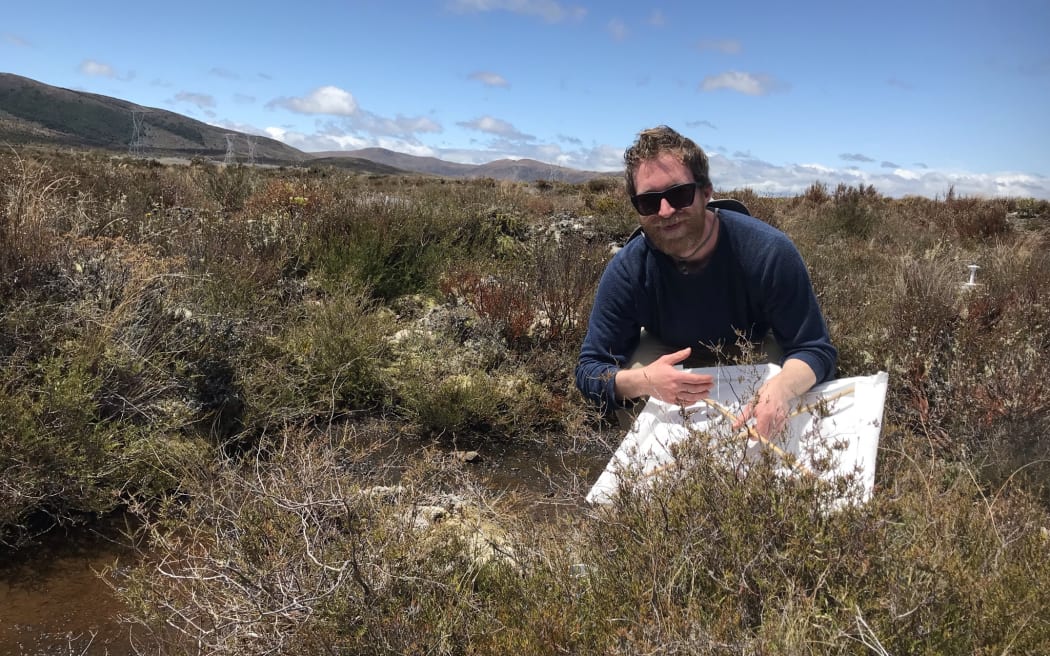It looks like the work of a small alien race. On the moonscape slopes of Mount Ruapehu, hexagon shapes enclose small patches of scrubby plants.
But these are not UFOs. These contraptions are more like time travel machines.

Julie and Janelle take NDVI readings on a plot. Photo: Claire Concannon / RNZ
Follow Our Changing World on Apple Podcasts, Spotify, Stitcher, iHeartRADIO, Google Podcasts, RadioPublic or wherever you listen to your podcasts
This alpine habitat plays host to a climate change experiment, investigating what will happen to plants here in a warming world. The hexagonal perspex chambers heat the soil and air temperature by 2°C – the predicted average rise in temperature in alpine regions up to 2070.
The site is one of just 20 worldwide that form the WaRM network – Warming and Removal in Mountains. Dr Julie Deslippe of Te Herenga Waka, Victoria University of Wellington, leads the research at these sites in Tongariro National Park.

Pindrop biomass survey. Photo: Claire Concannon / RNZ
The New Zealand team regularly monitor the plots to answer questions about what will happen to the biodiversity and carbon flux of these ecosystems as they heat up. Which plants are winners? Which are losers? Will heating mean the plants grow bigger, photosynthesise more, and take up more carbon? Or will the warming stress the plants out, meaning they respire or ‘breathe out’ more carbon?
Around the world there are ten countries with ten mountains participating in the WaRM network. Each has both a high- and low-elevation site on the same mountain, separated by at least 500m of altitude. The experiments are set up and monitored the same way in each location. Records are taken of the soil and air temperature, the plant species, percentage coverage and biomass, and the carbon exchange happening between the plants, soil and the atmosphere.

Jim DenUyl looking for heather beetles. Photo: Claire Concannon / RNZ
In some ‘removal’ plots, the most prevalent plant in the area has been taken out to see how this impacts plant biodiversity. At the low-elevation site in New Zealand, this dominant plant is invasive heather, so these plots give a window into what the future might be like if ongoing heather control methods prove successful. The research has been underway for eight years now, and with all this data, the team are starting to figure some things out.
Listen to the episode to find out what they have learned about the future of our alpine plants.
To learn more:
-
In Heather Bio-control in Tongariro National Park, Alison Ballance speaks to Paul Peterson from Manaaki Whenua – Landcare Research about the heather beetle.
-
Listen to a group of people involved in the protection of rare plants and the ecosystems they are found in Naturally rare and threatened.


